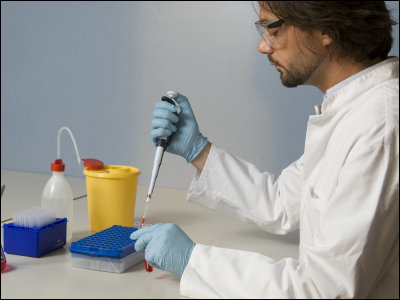HIV mutants that cause AIDS to progress more than twice as fast are discovered

Research on HIV, the causative virus of AIDS, is being conducted all over the world, and in 2022, clinical trials of an mRNA vaccine effective against HIV began. Meanwhile, a new research result was reported that a mutant strain that was more toxic than conventional HIV was discovered.
A highly virulent variant of HIV-1 virulence in the Netherlands
https://www.science.org/doi/10.1126/science.abk1688

Newfound variant of HIV progresses to AIDS faster and may be more transmissible | Live Science
https://www.livescience.com/new-severe-hiv-variant-netherlands
HIV is a virus that destroys CD4-positive lymphocytes , which are one of the immune cells, and weakens the immune system of infected people, causing various symptoms. There are multiple subtypes of this HIV with different characteristics, and 'subtype B' is the mainstream of HIV spreading in Europe.
A newly published study analyzed more than 8,000 HIV genetic sequences enrolled in the HIV follow-up project BEEHIVE in Europe and Uganda, and a total of 109 patients, mainly in the Netherlands, had HIV subtype B mutations. I found out that I was infected with the strain. In addition, the viral load of patients infected with this mutant was found to be 3.5 to 5.5 times higher than that of patients infected with normal subtype B. Furthermore, it was revealed that it takes an average of 6 to 7 years for normal HIV to progress from infection confirmation to AIDS, whereas for mutant strains, it takes an average of 2 to 3 years to progress to AIDS.

According to the research team, there are many parts where the genetic sequence has changed in the discovered mutant strain, and it is not possible to identify which genetic sequence accelerates the progression of AIDS. In addition, it is estimated that the mutant strains appeared in the late 1980s and early 1990s, and it is thought that the mutant strains spread widely because the use of HIV inhibitors was not widespread at that time.
On the other hand, the number of confirmed mutant strains that were discovered peaked in 2008 and began to decline. Chris Wimant, the lead author of the paper, explains why this is 'probably the result of efforts to prevent HIV transmission in the Netherlands, where many mutants have been identified.'
In addition, it is difficult to judge whether the discovered mutant strain is more infectious than other HIV because the HIV infection is reduced overall. 'People at risk of becoming infected with HIV can be diagnosed regularly for early detection of the infection and immediate treatment afterwards. This principle applies to mutant strains as well,' Wimant said. He emphasizes the importance of regular diagnosis.
Related Posts:
in Science, Posted by log1o_hf







